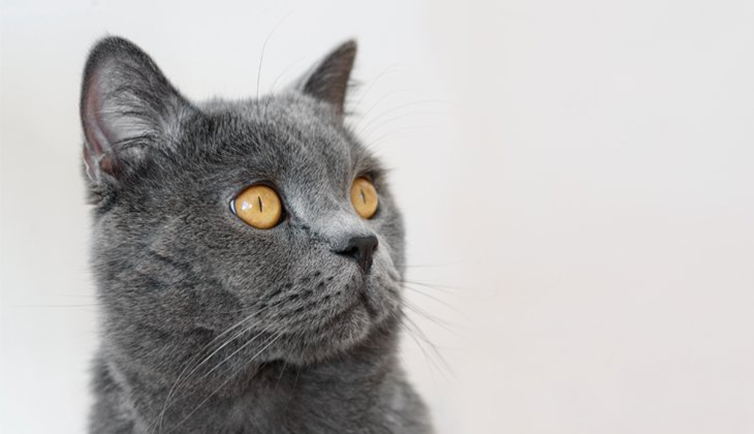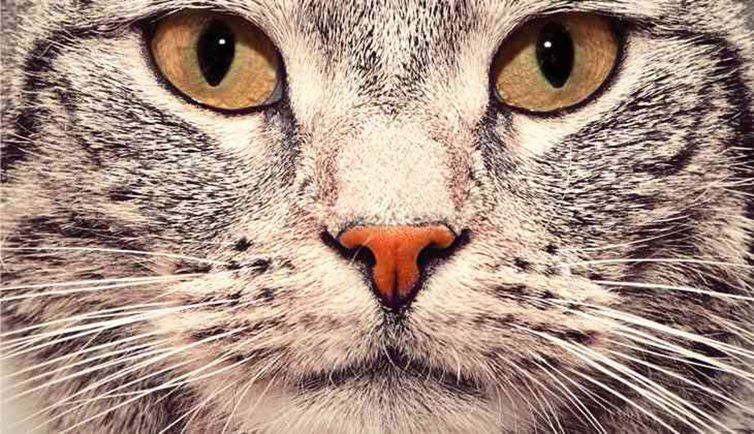Making Sense of Cat Senses
Your faithful feline is the descendent of a long lineage of predatory cats. Cats have only been considered household pets for a few thousand years while dogs were domesticated over 30,000 years ago. And while your modern house cat may not need to hunt for their dinner the same way their ancestors did, your pet still has a variety of acute cat senses, just like their highly-efficient predator ancestors.
CAT TIPS AND TRICKS CATS

Posted by bravectosouthafrica – 18 February 2021
Cat Hearing
We are led to believe that a cat’s sense of hearing is better than ours. In fact, your hearing is very similar to your cat’s on lower levels, but when it comes to higher pitches, your cat can out-hear your canine companion.
The muscles in cat’s ears make it possible to swivel 180 degrees which allows them to act like satellites – adjusting to the location of the sound. Cats have a whopping 32 muscles in their outer ears – compared to human’s six – which allow the feline to rotate the earcups independently of each other. They can also estimate the location of an object (usually their prey) and distinguish between sounds.
Cats can also detect a higher frequency range than humans and their canine counterparts. They can determine where a sound is coming from by sensing differences in the time of arrival to one or both ears, and the intensity of the sound. They can hear extremely high and quiet sounds and the combination of all these abilities allows cats to hear even the tiniest squeak of a mouse even in the dark.
As a cat owner, you might want to consider your kitty’s sensitive ears the next time the computer monitor is buzzing, or you turn up the volume of your favourite track. Any day-to-day sound in the home is much more intense for those pointy ears. But just like humans, the hearing of a cat can also diminish with old age. It is not uncommon for older cats to lose their hearing completely and become deaf. If you suspect your feline friend isn’t hearing as well, it is best to consult your veterinarian.
Cat Vision
It has long been held that cats’ sense of vision is superior to ours and that they can see in the dark. But, how do cats really see? In fact, the visual acuity of cats is actually 10 times lower than humans. Their low light vision is where cats surpass most other mammals. Cats have a reflective layer located in the back of their eyes, called the tapetum lucidum that allows the eyes to adjust to the amount of light passing through the retina, increasing it when necessary, for example, at dusk. This reflective layer is also responsible for that spooky glow in their eyes when they are illuminated in the dark. However, cats cannot see any better than humans in total darkness as there is nothing for the tapetum lucidum to reflect.
The actual size and placement of a cat’s eyes on his or her head are actually ideal for accurately estimating the distance of objects and especially prey. The structure of the cat’s retina is also a key component in finding prey, because it is composed of a number of movement detectors or receptors.

Do Cats See Colour?
It is a common misconception that cats only see in black and white but the truth is, there is no definitive conclusion on the matter. Some research has suggested that cats can actually distinguish between colours but absolutely cannot identify the colour red. Luckily colour does not seem to really play a very important part in the everyday life of a cat.
Cat’s Sense of Smell
If you think your cat has a good sense of smell, you’re right! This sense is well-developed by the time they are an adult. We cannot compare kitty’s sense of smell to the super-powered sniffers on dogs, but your cat still has a far superior sense of smell to you. Within your cat’s tiny nose, he or she has 10 times the smell-sensing surface compared to humans. They use this to evaluate food or fellow felines but not particularly for hunting. When wandering their own territory, a cat primarily uses smell to sniff out boundary markers and to identify other cats based on gender, hormones and social position.
Smell is especially important for cats when it comes to evaluating food. If a cat’s nasal passages become clogged as a result of illness, it may appear to lose appetite completely. If your cat is turning up his or her nose at food, you may want to consult your veterinarian.
Cat’s Sense of Taste
You know your cat wolfs down that tuna treat and may turn its nose up if you change her preferred dry food but, this has to do with a lot more than just taste as several senses are actually hard at work. Your cat evaluates the food through smell, temperature, size and shape, as well as taste. Cat food manufacturers have long recognised that cats prefer tinned food in chunks, which resembles the shape and consistency of their prey. Dry food is favored if it is crunchy, like the bones of rats and mice. Also, warming food slightly will make it even more desirable as it is a similar temperature to fresh-caught prey.
Cats do have taste buds that are similar to humans in some ways but quite different in others. Human taste buds can distinguish sweet, sour, bitter, salty and savory – cats cannot taste sweet flavours. Studies have shown the possibility that because cats are genetic carnivores and are driven to consume meat, they have no reason to have a taste for sugar. So if your cat is after your sweet coffee or cake, it is more likely that they are drawn to the fat content. Cats are extremely good at detecting fat. Similarly, the bitter and sour taste sensors in your cat’s tongue are extremely important as they warn him or her of poisonous food or objects.
A Cat’s Sense of Touch
Touch is a primary source of affection for cats from birth. It is a fundamental sense in kitten development. Cats groom themselves and each other, they lay against one another, and grown cats often behave like kittens by kneading their human when they are stroked. Your cat is extremely sensitive to touch because each hair on his or her body has nerve endings. Every time you pat or stroke your feline friend, you actually evoke a response from the nervous system.
The hairs on the body also act as receptors to the world around your cat. The same is true of your cat’s whiskers, which were designed to detect even the smallest change in the environment and safely guide a cat in low visibility. Because of these highly-developed senses, people have long-believed that cats can detect natural disasters, diseases and even impending death!
Development of Kitten Senses
Kittens go through a few stages of sense development. At birth, kittens are blind and deaf – their ears and eyes open between 5 and 15 days. Once they can hear and see, kittens can begin to send and receive information from other cats, animals and objects in their environment.
At approximately 2 weeks, kittens start to respond to sounds and at about 3 weeks they start to follow visual cues. By 4 weeks old, kittens move about and interact with their environment, but their signals are indistinct – they have not quite mastered all of their kitten senses. Over the course of the next couple of weeks however, they will learn to use their keen kitty senses the way generations of cats have before them.
Subscribe to our Newsletter
Get to know your furry friend better! Sign up for all things dog- or cat-related.
The Hairy Facts about the dreaded hairball
12 April 2021
Help! My dog’s barking mad! Volume 2
12 April 2021
Your Itchy, Scratchy Cat – All About Cat Skin Problems
12 April 2021
The Dog’s Diet: A Bone of contention?
01 April 2021
Mango Fly Worms: How to Spot and Eliminate them
Posted on November 28,2019
Managing Mange And Mites In Your Dog
Posted on June 11,2018
Why Do Cats Purr and How? Learn What Your Cat Is Saying
Posted on October 14,2020
How to Get Rid of Ear Mites in Dogs
Posted on November 06,2019









